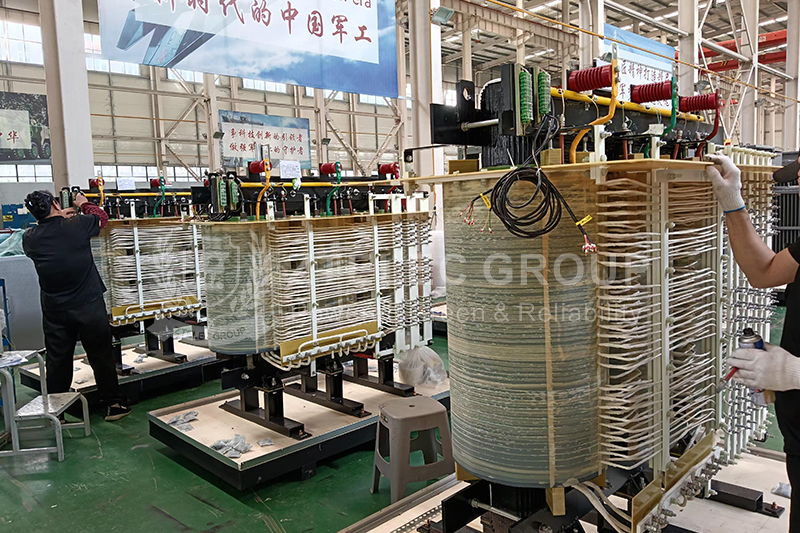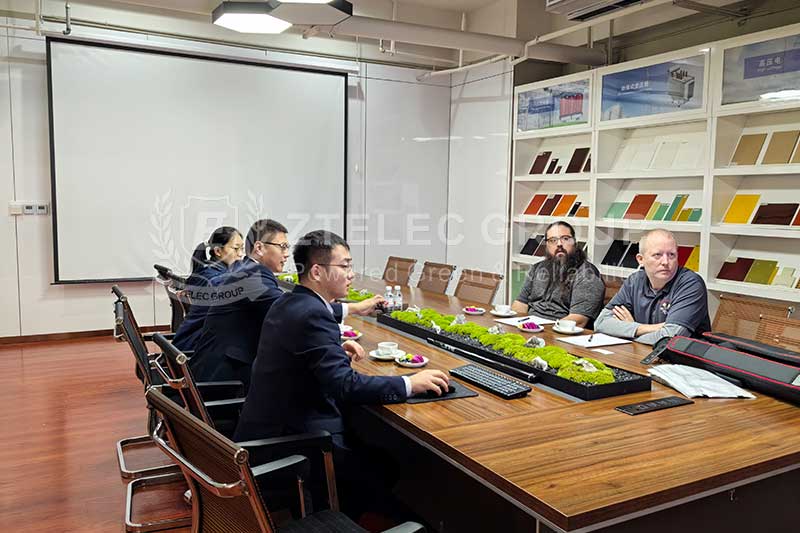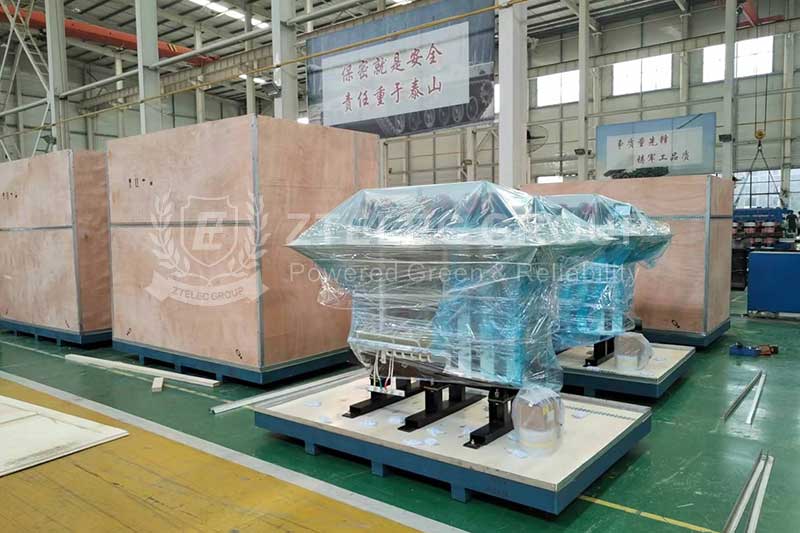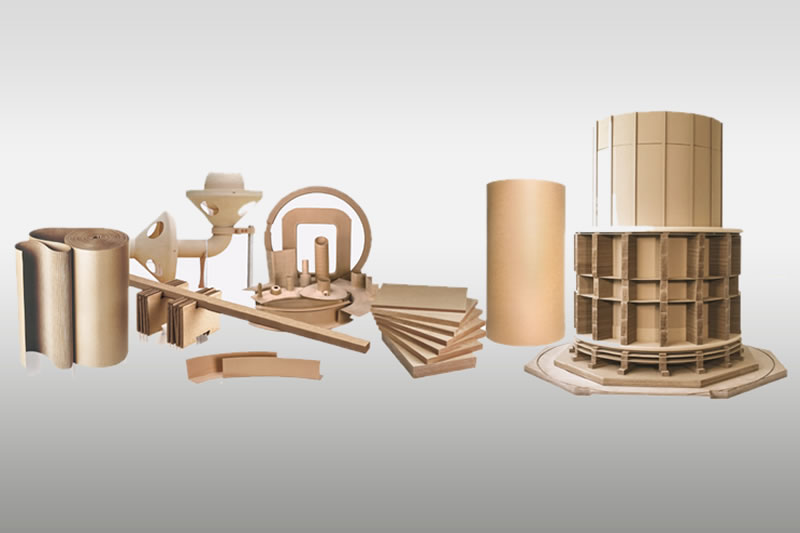Phenolic cotton cloth tube VS Epoxy tube: How to choose the right tube
Phenolic cotton cloth tube and epoxy tube are two commonly used insulating tube materials in electrical insulation, mechanical structures, and specific industrial applications. While they may appear similar, their material properties and applications differ. Choosing the wrong tube can lead to equipment failure, increased costs, and even safety issues. This article explains the differences between phenolic cotton cloth tube and epoxy tubing and provides practical selection methods to help you choose the right tube for your needs.
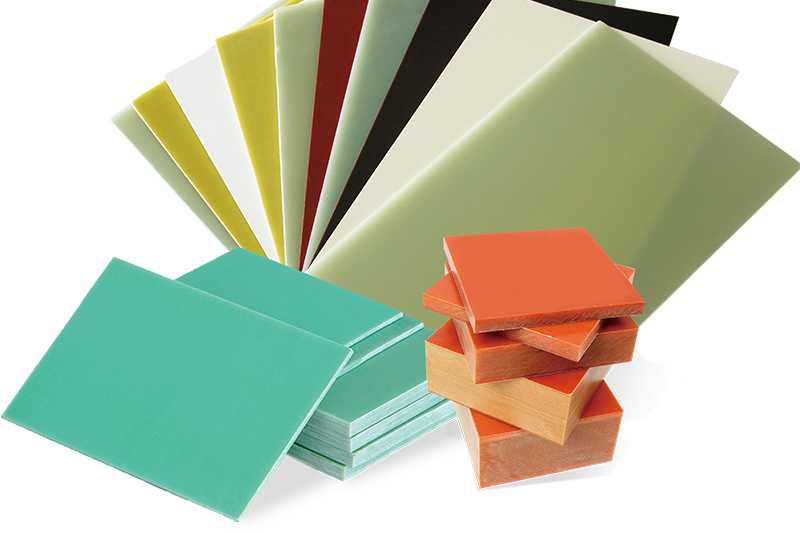
Key Differences Between Phenolic Cotton Cloth Tube and Epoxy Tube
1. Material Composition and Structure
Phenolic cotton cloth tube uses cotton cloth as a reinforcement, impregnated with phenolic resin, and then heat-pressed to solidify. Made of a composite of organic materials, it relies on the cotton cloth for mechanical strength and the phenolic resin for heat resistance.
Epoxy tube typically uses glass fiber as a reinforcement, impregnated with epoxy resin and then cured. The glass fiber provides greater mechanical strength, while the epoxy resin enhances electrical performance and chemical resistance.
2. Key Performance Comparison
Phenolic cotton cloth tube:
It has high mechanical strength, is not easily absorbed by water, and has good wear resistance. However, its heat resistance is average, with a maximum temperature of only 130°C (Class B).
Epoxy tube:
It has higher mechanical strength, can withstand temperatures of 155°C and above (Class H), and also offers superior electrical performance.
3. Application Scenarios
Phenolic cotton cloth tube is suitable for low-voltage electrical equipment and mechanical supports in dry environments, such as transformer bobbins and motor insulation bushings. It is inexpensive and suitable for non-core structural components.
Epoxy tube is commonly used for high-voltage electrical equipment, electronic components, structural components in chemical environments, and other applications requiring high mechanical strength and weather resistance.
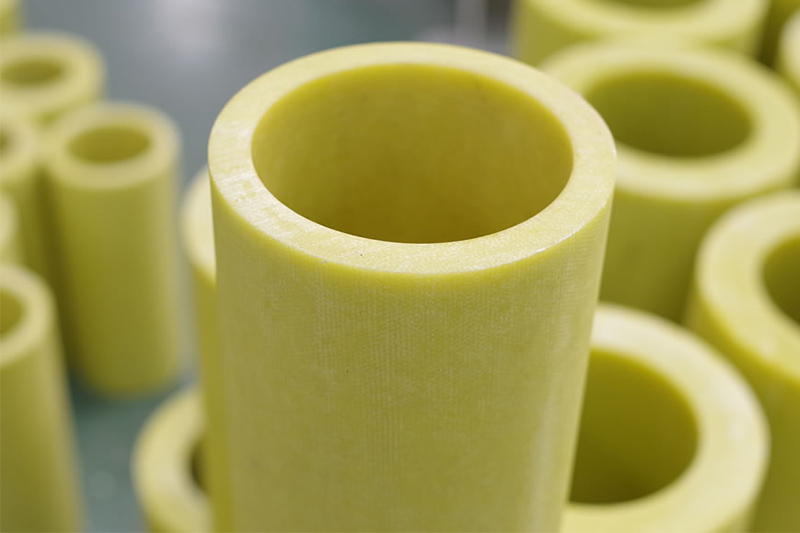
How to choose the right type? Five key factors
1. Operating Temperature
If the equipment's operating temperature does not exceed 105°C for extended periods and there are no frequent temperature fluctuations, phenolic cotton cloth tube is sufficient.
If the temperature exceeds 120°C, or if it experiences sudden overheating, or if UL certification is required, choose epoxy tube.
2. Mechanical Strength Requirements
Phenolic cotton cloth tube is suitable for static, low-stress applications, such as supporting and insulating components.
Epoxy tube is suitable for dynamic, high-speed equipment, such as bearing bushings and robotic joint components.
3. Environmental Conditions
Humid or corrosive environments: Phenolic cotton cloth tube should be avoided, as its insulation performance will be significantly reduced after absorbing moisture. Epoxy tube is preferred for its moisture and chemical resistance.
Outdoor applications or applications with large temperature fluctuations: Epoxy tube offers better weather resistance and is more adaptable to these environments.
4. Electrical Performance Requirements
If the voltage is below 1kV and there are no strict requirements for dielectric loss, phenolic cotton cloth tube can meet the requirements.
If the voltage is higher than 1kV, or it is a high-frequency circuit, epoxy tube must be used, which has a stable dielectric constant and good partial discharge performance.
5. Cost and Processing
When budgets are limited, phenolic cotton tube is typically 30%-50% cheaper than epoxy tube, making it more cost-effective.
When precision machining is required, epoxy tube is more suitable for operations such as turning, milling, and grooving, and avoids delamination.
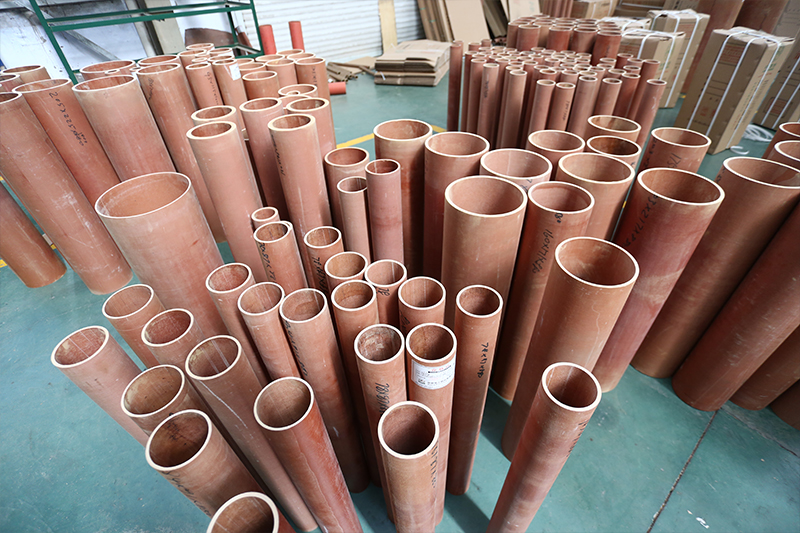
FAQs
Q1: Can phenolic cotton tube and epoxy tube be directly distinguished by appearance?
A1: It's usually difficult to distinguish them based on appearance alone. Both can range in color from yellow to brown. There are three most reliable ways to distinguish them:
Inspect the material: After cutting, phenolic cotton tube will show a distinct cloth texture, while epoxy tube will show the fiberglass structure.
Burning: Ignite a small amount of scraps. Phenolic cotton tube will smell like burning cloth, while epoxy tube will burn easily and extinguish immediately after removal from the flame.
Check the labeling: Ask the supplier for a Certificate of Material (COC) to confirm.
Q2: Why is epoxy tube necessary for humid environments?
A2: Because phenolic cotton tube is reinforced with cotton, which absorbs moisture easily. In humid environments, cotton absorbs water, significantly reducing the insulation resistance of the pipe, making it prone to leakage or breakdown. However, the glass fiber in epoxy tubes does not absorb water, and the epoxy resin seals them well, ensuring stable, high insulation performance over time.
Q3: Epoxy tube is more expensive. In which cases should epoxy tube not be used?
A3: Phenolic cotton tube is more cost-effective when all of the following conditions are met:
Dry environment: The interior of the equipment is always dry.
Moderate temperature: The operating temperature is below 105°C for a long period of time.
Low stress: The tube is only used as an insulating bushing or static support, and is not subject to impact or strong forces.
Low-voltage electrical equipment: Applications with low insulation requirements, such as small toys and the interior of ordinary household appliances.
Using epoxy tube in these situations would result in wasted performance and unnecessary expense.
- more+releated article
- 2025-12-13How to Select and Use Phenolic Cloth-base Lami
- 2025-12-13How Much Does Bakelite Sheet Cost? 2025 Price
- 2025-12-13Why are most 3240 epoxy boards yellow?
- 2025-12-13What are the Main Applications of FR4 Epoxy Bo
- 2025-12-13Why Does the Price of Insulating Paperboard Va
- 2025-12-13Heat-Resistant DDP Insulation Paper
- 2025-12-13Comparison of Heat-Resistant DDP Insulating Pa
- 2025-12-13G10 and FR4 Epoxy Boards: Commonly Used for Ge
- 2025-12-13The Price of Heat-Resistant DDP Insulation Pap
- 2025-12-13How to Choose Epoxy Laminate Materials for Gen

